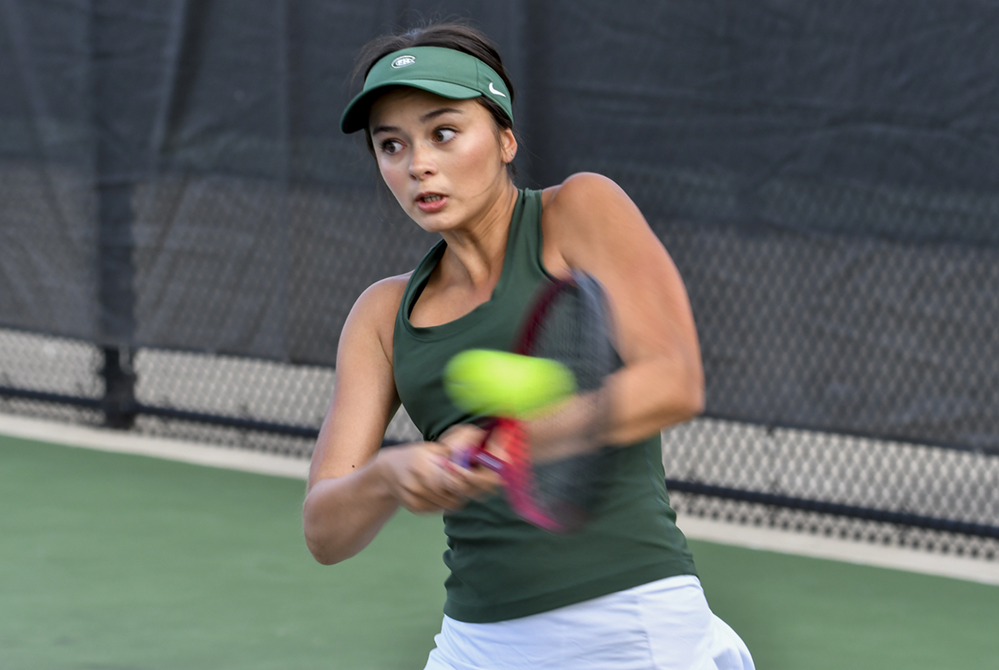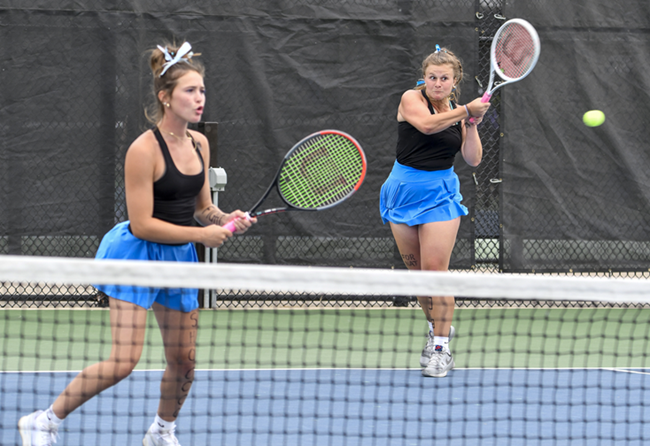
New Math: Division & Multiplication Problems
July 25, 2017
By Jack Roberts
MHSAA Executive Director
This is the second part in a series on MHSAA tournament classification, past and present, that will be published over the next two weeks. This series originally ran in this spring's edition of MHSAA benchmarks.
High school tournament classifications went viral before there was social media and most of us knew what “viral” meant.
Much as a virus infects computers today or has created epidemics of disease around the world for centuries, high school tournament classification – once introduced – tends to spread uncontrollably. Once started, it tends to keep expanding and rarely contracts.
While we are still some distance from providing every team a trophy as a result of expanding high school tournament classification across the country, there is criticism nevertheless that we are headed in that direction – a philosophy which is supposed to exist only in local youth sports for our youngest children.
Michigan could be blamed for all this. Michigan is generally accepted as the first state to provide different classifications for season-ending tournaments for different sized schools. It started a century ago. Today, every state has various classifications for its tournaments in most if not all sports. And it is a bit ironic that Michigan – creator of the classification chaos – more than most other states has kept the number of tournament classes or divisions under control.
Yes, there is evidence that tournament classifications have expanded over the years in Michigan, especially with the relatively recent introduction of tournaments in football and the late 1990s’ move from classes to divisions in most MHSAA tournaments. But the MHSAA Representative Council has held true to its word when it expanded the playoffs for football from four classes to eight divisions: this is needed because of unique factors of football, factors that exist in no other sport; and all other sports should be capped at a maximum of four classes or divisions.
Kentucky is the preeminent defender of single-class basketball. All of its 276 high schools compete for the single state championship for each gender. In Indiana, there are still open wounds from its move in 1998 from one to four classes for its 400 schools in basketball.
Multi-class tournaments have tended to increase the number of non-public school champions, which some states are trying to lower through enrollment “multipliers,” and also tend to increase the number of repeat champions, which some states are trying to affect with “success factors” which lift smaller schools into classifications for larger schools if they take home too many trophies.
While there is considerable evidence that state tournaments do as much bad as good for educational athletics, state associations persist in providing postseason tournaments because, on balance, the experiences are supposed to be good for student-athletes. And once we reach that conclusion it is just a small leap to believe that if the tournaments are good for a few, they must be better for more – which leads to creating more and more tournament classifications. One becomes two classes, then three, then four and so forth.
While the argument is that more classifications or divisions provides more students with opportunities to compete and win, it is undeniable that the experience changes as the number of tournament classifications expands. It is not possible for state associations to provide the same level of support when tournament classifications expand to multiple venues playing simultaneously. For example, there is less audio and video broadcast potential at each venue, and less media coverage to each venue. Focus is diluted and fans diminished at each championship.
No one can argue reasonably that today's two-day MHSAA Football Finals of eight championship games has the same pizazz as the one-day, four-games event conducted prior to 1990.
In some states the number of divisions has grown so much that it is difficult to see much difference between the many season-ending state championship games and a regular-season event in the same sport.
It is a balancing act. And Michigan has been studying that balance longer than any other state, and charting a steadier course than most.
Addition by Division
The shift to Divisions for MHSAA Tournament play in numerous sports has added up to a greater number of champions for teams and individuals across the state. Following are the sports currently employing a divisional format, and the procedures for determining enrollment and classification.
In 23 statewide or Lower Peninsula tournaments, schools which sponsor the sport are currently divided into nearly equal divisions. They are:
- Baseball - 4 Divisions
- Boys Bowling - 4 Divisions
- Girls Bowling - 4 Divisions
- Girls Competitive Cheer - 4 Divisions
- LP Boys Cross Country - 4 Divisions
- LP Girls Cross Country - 4 Divisions
- LP Boys Golf - 4 Divisions
- LP Girls Golf - 4 Divisions
- Ice Hockey - 3 Divisions
- Boys Lacrosse - 2 Divisions
- Girls Lacrosse - 2 Divisions
- Boys Skiing - 2 Divisions
- Girls Skiing - 2 Divisions
- LP Boys Soccer - 4 Divisions LP
- Girls Soccer - 4 Divisions
- Girls Softball - 4 Divisions
- LP Boys Swimming & Diving - 3 Divisions
- LP Girls Swimming & Diving - 3 Divisions
- LP Boys Tennis - 4 Divisions
- LP Girls Tennis - 4 Divisions
- LP Boys Track & Field - 4 Divisions
- LP Girls Track & Field - 4 Divisions
- Wrestling - 4 Divisions
Lists of schools for each division of these 23 tournaments are posted on MHSAA.com approximately April 1. Listings of schools in Upper Peninsula tournaments for their sports are also posted on MHSAA.com. The lists are based on school memberships and sports sponsorships in effect or anticipated for the following school year, as known to the MHSAA office as of a date in early March.
In football, the 256 schools which qualify for MHSAA 11-player playoffs are placed in eight equal divisions annually on Selection Sunday. Beginning in 2017, the 8-player divisions will be determined in a like manner on Selection Sunday as well, with 32 qualifying schools placed in two divisions.
Schools have the option to play in any higher division in one or more sports for a minimum of two years.
The deadlines for "opt-ups" are as follows:
- Applications for fall sports must be submitted by April 15
- Applications for winter sports must be submitted by Aug. 15
- Applications for spring sports must be submitted by Oct. 15
Subsequent to the date of these postings for these tournaments, no school will have its division raised or lowered by schools opening or closing, schools adding or dropping sports, schools exercising the option to play in a higher division, or approval or dissolution of cooperative programs.
When the same sport is conducted for boys and girls in the same season (e.g., track & field and cross country), the gender that has the most sponsoring schools controls the division breaks for both genders.

Forest Hills Rules D2: FHC's Ohlman Repeats, FHN Takes Back Team Title
By
Keith Dunlap
Special for MHSAA.com
June 1, 2024
BYRON CENTER — The last day of actual school this year for Grand Rapids Forest Hills Central senior Lily Ohlman might have been May 6. But from a tennis perspective, it can be argued that her last day of school was May 4 — when she learned a few things that paid off during her final high school tournament.
It was then that Ohlman suffered a three-set loss to Megan Sullivan of Farmington Hills Mercy (10-8 in the third-set tiebreak). Earning a rematch with Sullivan in the No. 1 singles championship match at the MHSAA Lower Peninsula Division 2 Finals on Saturday, Ohlman tried to figuratively go to school and do her homework from that last match with Sullivan.
“Megan has an extremely good forehand,” Ohlman said. “She really hurt me with that in the last match. Going into this, I just tried as hard as I could not to hit it to her forehand. When I did, I tried to hit it deep and stuff.”
Ohlman certainly played like someone who did her homework from that match as well, as she earned her second straight singles title with a 6-3, 6-3 victory over the junior from Mercy.
Ohlman reached Sullivan by surviving Ana Cheng of Mattawan in the semifinals, 6-2, 4-6, 6-3.
“I have thought about this every day for the past year since I won states for the first time,” Ohlman said of trying to repeat. “It’s been like a true dream come true for my tennis career.”
While Ohlman brought home an individual title for Forest Hills Central, rival Forest Hills Northern claimed the team championship for the third time over the last four years. The Huskies netted 29 points to edge 2023 champion Birmingham Seaholm, which finished with 23.
 Northern had players in five flights advance to finals, with four of those flights producing championships.
Northern had players in five flights advance to finals, with four of those flights producing championships.
FHN’s title was punctuated when the No. 1 doubles team of Ryan Morey and Paige McKenzie defeated Seaholm’s team of Jenna Ting and Katie Slazinski in a thrilling final, 6-3, 5-7, 6-4. Northern actually had the team title clinched by that point, but head coach Steven Olson didn’t want his players to know that.
“I don’t want them to back off because they think the team has already won it,” he said. “I want them to think they are still hunting for a title the entire time.”
Huskies junior Andrea Wang defeated Keira Kirkland of Farmington Hills Mercy, 5-7, 7-6 (2), 6-2 to win at No. 2 singles, sophomore Harriet Ogilvie captured the title at No. 3, and the team of Lauren Jaklitsch and Morgan McKenzie won at No. 2 doubles.
Olson guided his team to a Finals title in his second year as head coach after taking over for Dave Sukup, who led the program for 49 years before retiring. Northern had fallen to No. 2 behind Seaholm in the final regular-season coaches rankings. And then the Huskies lost their No. 1 singles player Nathalie Lanne to a torn ACL last week.
Her replacement, Natalia Acevedo, managed to win a first-round match to earn a crucial point despite not being seeded.
Also stepping up was sophomore Aanya Dogra, who entered the tournament unseeded at No. 4 singles. Dogra recorded upsets of No. 3 seed Elisa Costeux of Mattawan and No. 2 seed Maddy Youngblood of Grosse Pointe South before falling in the championship match to No. 1 seed Gabby Owens of Farmington Hills Mercy, 6-0, 6-2.
Still, Dogra’s run earned some major points for the Huskies.
“The rest of the team just stepped up and performed,” Olson said. “It’s been a wild weekend, but I’m very proud of these girls.”
PHOTOS (Top) Forest Hills Central’s Lily Ohlman returns a volley during her No. 1 singles championship match Saturday. (Middle) Forest Hills Northern’s Paige McKenzie, right, with partner Ryan Morey, sends back a powerful volley at No. 1 doubles. (Click for more from High School Sports Scene.)

